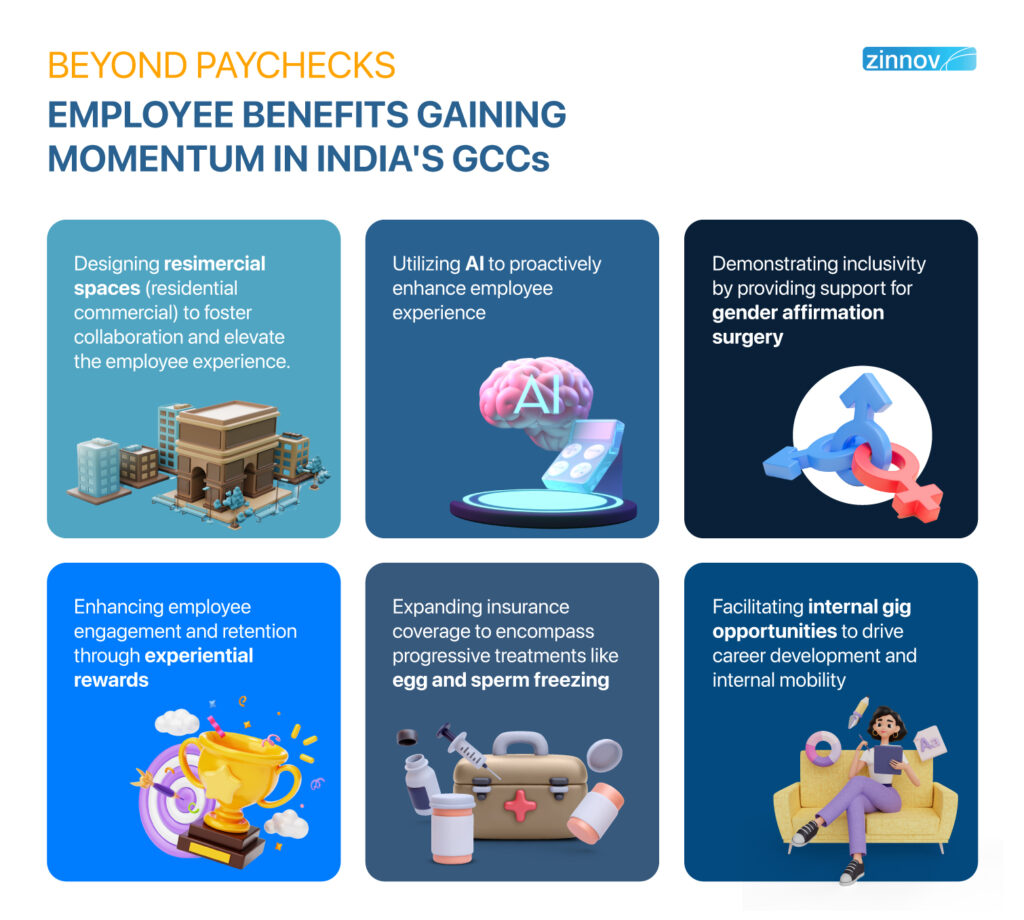|
|
Remember the game of musical chairs? When the music stopped, everyone scrambled for a seat. The talent market in past few years has been a lot like that. We saw a period of what’s been called the “Great Resignation.” Employees made consecutive job switches in search for growth, value and of course better paychecks.
But then, plot twist! The music stopped, and suddenly, there weren’t enough chairs to go around. Companies worried about the economy became cautious. Hiring freezes and even layoffs became common. Suddenly, the “Big Stay” became the new name of the game – where the focus has shifted from “Where’s my next seat?” to “How do I keep the one I have?
Now, this puts India’s Global Capability Centers (GCCs) in a tricky situation. They still need to focus on retaining their top talent, but they also have to strategically align their workforce with their business objectives.
So, what does this mean for GCCs? Well, they’re facing their own set of challenges amidst all this uncertainty. Sure, there are signs that things are stabilizing, with projected attrition rates dropping to 11.5% in 2024 (down from 13.3% in 2023). But let’s be real, keeping top performers from jumping ship is still a major priority.
The big question on everyone’s mind is, how can GCCs convince their best and brightest to stick around when the grass might seem greener elsewhere?
Recently, Zinnov conducted a study, titled Salary Increase, Attrition, and Hiring Trends — An India GCC View, to capture the essence of the job market. The study revealed that GCCs are prioritizing the high performers with them receiving a 1.6X – 1.8X higher salary increase compared to the average increase.

Traditional compensation packages just don’t cut it anymore. Today’s top talent seeks more than just a high salary – they crave opportunities for growth, industry-driven skill development, and a sense of purpose that aligns with their values.
This shift in employee expectations is largely influenced by the entry of new generations into the workforce, particularly Gen Z (born between 1998-2012). While Gen Z currently makes up around 20% of the workforce, with Millennials holding the majority at 70%, this tech-savvy generation is rapidly growing and will soon comprise nearly half of the tech talent, working alongside their Millennial counterparts.
As the workforce becomes increasingly multi-generational, it’s clear that a one-size-fits-all approach to employee benefits is no longer effective. Each generation brings its own unique set of priorities and values to the table. For instance, Gen Z places a strong emphasis on work-life harmony, continuous growth, and purpose-driven work, which may differ from the priorities of previous generations.
To effectively attract, retain, and support this diverse workforce, GCCs need to adopt a more tailored, multi-generational approach to employee benefits. It’s about understanding the distinct needs and aspirations of each generation and crafting benefit packages that resonate with them on a deeper level.

What are some effective strategies for talent retention in GCCs considering the current landscape? Here are some key areas to focus on:
By implementing these strategies, GCCs can demonstrate their commitment to their employees’ growth, well-being, and success, positioning themselves as employers of choice in the competitive talent market.

The window of opportunity to attract and retain top talent is shrinking. With a renewed focus on growth and purpose, skilled professionals are actively seeking employers who offer a holistic and future-oriented employee experience. By embracing this new paradigm, GCCs can position themselves as talent magnets in the ever-evolving job market.
Zinnov’s Employee Benefits Report empowers TR leaders to make informed decisions regarding the future talent needs in GCCs, resource allocation, and securing a competitive edge in talent acquisition and retention.
Dive Deeper: